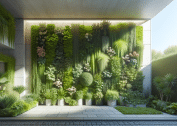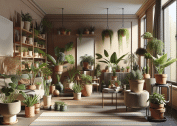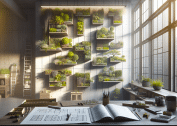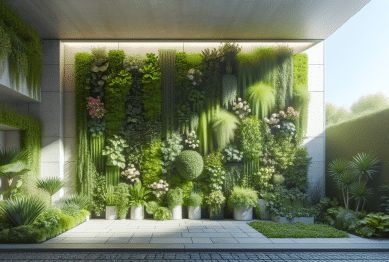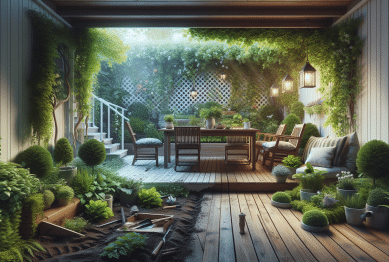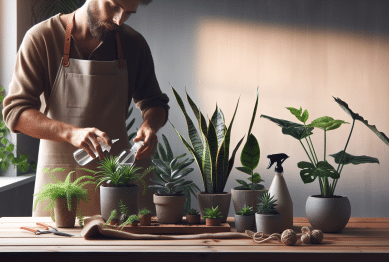As remote and hybrid work models continue to shape our professional lives, the importance of a home office that fuels creativity has never been more pronounced. In 2025, the focus has shifted from merely functional spaces to environments that inspire innovation, well-being, and productivity. This guide delves into the emerging trends and practical strategies to transform your workspace into a creative haven.
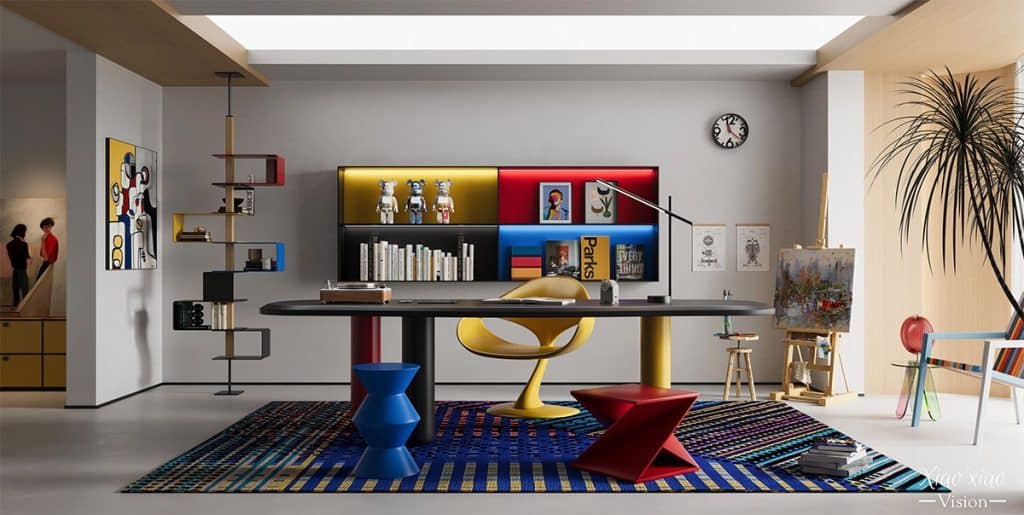
1. Embrace Biophilic Design to Connect with Nature
Biophilic design remains a cornerstone of modern home office aesthetics. Incorporating natural elements like plants, natural light, and organic materials can significantly enhance mood and cognitive function. Studies have shown that exposure to nature can reduce stress and improve focus, making it a vital component of a creative workspace.
Practical Tips:
- Place low-maintenance plants like snake plants or pothos near your desk.
- Utilize natural materials such as wood or stone for furniture and decor.
- Maximize natural light by positioning your desk near windows or using light-colored furnishings to reflect daylight.
2. Integrate Smart Technology for Efficiency
The integration of smart technology into home offices is a growing trend in 2025. Devices that adjust lighting, temperature, and even desk height can create a more comfortable and efficient workspace. Voice-controlled assistants can manage tasks, allowing you to focus more on creative endeavors.
Implementation Ideas:
- Install a smart thermostat to maintain optimal temperature.
- Use adjustable desks that promote ergonomic health.
- Incorporate smart lighting systems that adjust based on time of day or activity.
3. Prioritize Ergonomics to Enhance Comfort
Comfort is crucial for sustained creativity. Ergonomic furniture that supports your body can prevent strain and fatigue, leading to longer, more productive work sessions. In 2025, ergonomic design is not just about functionality but also about aesthetics that complement your creative space.
Suggestions for Ergonomic Furniture:
- Invest in chairs with lumbar support and adjustable features.
- Choose desks with sufficient space for movement and organization.
- Select accessories like keyboard trays and monitor stands to maintain proper posture.
4. Create Multifunctional Spaces for Flexibility
As work-life boundaries blur, multifunctional spaces are becoming essential. Designing areas that can serve multiple purposes—such as a reading nook, brainstorming corner, or relaxation zone—can enhance creativity by providing varied environments within your home office.
Design Strategies:
- Use modular furniture that can be easily reconfigured.
- Incorporate movable partitions or curtains to create adaptable zones.
- Ensure each area has distinct lighting and decor to set the mood for different activities.
5. Personalize Your Space to Reflect Your Identity
A personalized workspace can boost motivation and creativity. In 2025, there’s a shift towards incorporating elements that reflect personal style and values. Whether it’s artwork, travel souvenirs, or inspirational quotes, these items can make your home office feel uniquely yours.
Personalization Tips:
- Display artwork or photographs that inspire you.
- Include items that reflect your hobbies or interests.
- Choose decor that aligns with your personal values and aesthetics.
6. Incorporate Acoustic Solutions for Focused Work
Noise distractions can hinder creativity. In 2025, acoustic enhancements are being integrated into home office designs to create quieter, more focused environments. Soundproofing materials and noise-canceling technologies can help maintain concentration and reduce stress.
Acoustic Improvement Ideas:
- Install acoustic panels or foam tiles on walls.
- Use thick curtains or rugs to absorb sound.
- Consider noise-canceling headphones for tasks requiring deep focus.
7. Design Wellness Zones to Recharge
Integrating wellness zones within your home office can promote mental and physical well-being. These areas, dedicated to activities like meditation, stretching, or simply taking a break, can rejuvenate your mind and body, fostering a more creative mindset.
Wellness Zone Features:
- Include comfortable seating or mats for stretching and relaxation.
- Incorporate calming elements like soft lighting and soothing colors.
- Ensure the space is free from work-related distractions to facilitate true relaxation.
8. Utilize Sustainable Materials for an Eco-Friendly Workspace
Sustainability is a growing concern in design. Using eco-friendly materials not only benefits the environment but also contributes to a healthier workspace. In 2025, there’s an emphasis on incorporating sustainable elements into home office designs.
Sustainable Material Choices:
- Opt for furniture made from reclaimed or responsibly sourced wood.
- Choose decor items crafted from natural or recycled materials.
- Implement energy-efficient lighting and appliances.
Conclusion
Designing a home office that fuels creativity in 2025 involves a harmonious blend of functionality, aesthetics, and personal expression. By embracing biophilic design, integrating smart technology, prioritizing ergonomics, creating multifunctional spaces, personalizing your environment, incorporating acoustic solutions, designing wellness zones, and utilizing sustainable materials, you can craft a workspace that not only enhances productivity but also inspires innovation.
Beyond these trends, it’s important to recognize that a creative home office is deeply personal. Every individual responds differently to their environment, so observing how you interact with your space is key. For instance, some people may thrive with vibrant colors and stimulating decor, while others prefer neutral tones and minimalistic layouts to maintain focus. Paying attention to your own habits and energy patterns can help you optimize the layout, lighting, and furniture choices in ways that genuinely support your work style.
Additionally, flexibility should be central to your design philosophy. As projects evolve, your needs may change, requiring adjustments to your workspace. Modular furniture, movable partitions, and adjustable lighting make it easier to adapt your office to different tasks or moods. Small adjustments, like switching your desk’s orientation to take advantage of natural light or reconfiguring seating for collaborative work, can make a significant difference in sustaining creativity over time.
Finally, don’t underestimate the power of balance. A home office that fuels creativity also needs to support mental and physical well-being. Incorporating wellness zones, taking regular breaks, and creating a clear separation between work and personal life can prevent burnout and maintain long-term productivity. By thoughtfully combining design, personalization, and wellness strategies, your home office can become more than just a functional space—it can be a hub of innovation, comfort, and inspiration that reflects your personality and supports your professional growth for years to come.
References
- Decorilla. (2025). Home office trends 2025: Top design ideas for productivity and creativity.
Available at: https://www.decorilla.com (Accessed: 13 August 2025). - Southern Living. (2025). Phone-free zones and workspace wellness. Available at: https://www.southernliving.com (Accessed: 13 August 2025).
- New England Home Shows. (2025). Tips on refreshing your office in 2025. Available at: https://www.newenglandhomeshows.com (Accessed: 13 August 2025).


